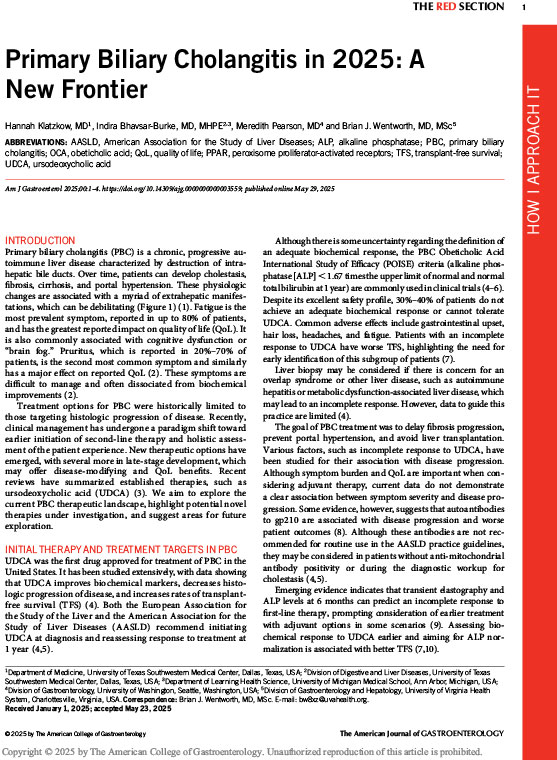Primary Biliary Cholangitis in 2025: A New Frontier
May 2025
Introduction
Primary biliary cholangitis (PBC) is a chronic, progressive autoimmune liver disease characterized by destruction of intrahepatic bile ducts. Over time, patients can develop cholestasis, fibrosis, cirrhosis, and portal hypertension. These physiologic changes are associated with a myriad of extrahepatic manifestations, which can be debilitating (Figure 1) (1). Fatigue is the most prevalent symptom, reported in up to 80% of patients, and has the greatest reported impact on quality of life (QoL). It is also commonly associated with cognitive dysfunction or “brain fog.” Pruritus, which is reported in 20%–70% ofpatients, is the second most common symptom and similarly has a major effect on reported QoL (2). These symptoms are difficult to manage and often dissociated from biochemical improvements (2).
Treatment options for PBC were historically limited to those targeting histologic progression of disease. Recently, clinical management has undergone a paradigm shift toward earlier initiation of second-line therapy and holistic assessment of the patient experience. New therapeutic options have emerged, with several more in late-stage development, which may offer disease-modifying and QoL benefits. Recentreviews have summarized established therapies, such as ursodeoxycholic acid (UDCA) (3). We aim to explore the current PBC therapeutic landscape, highlight potential novel therapies under investigation, and suggest areas for future exploration.
Copyright © 2025 The American College of Gastroenterology
Note: Obeticholic acid, marketed under the brand name Ocaliva® for the treatment of primary biliary cholangitis (PBC), was voluntarily withdrawn from the US market by Intercept Pharmaceuticals following a request from the US Food and Drug Administration (FDA) on 11/14/2025

